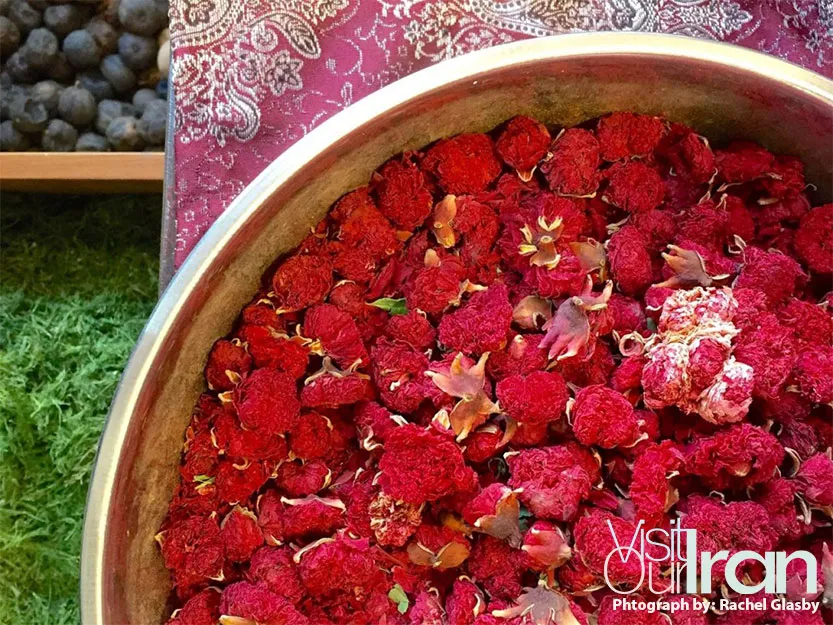RACHEL GLASBY, CO-OWNER OF GLOBAL HOMEWARES AND ACCESSORY STORE THE SILK ROAD, TALKS ABOUT EXPLORING THE DUSTY INCENSE-INFUSED BAZAARS, MOSAIC-DECORATED MOSQUES AND INTOXICATING ANCIENT ARCHITECTURE OF IRAN, WITH HER HUSBAND AND TWO-YEAR-OLD DAUGHTER. (Interview by Nina Karnikowski and initially published on her website. We invite you to read Rachel’s experiences during her visit to Iran)

Before you left for Iran, you mentioned to me that you felt the western media portrays Iran in such a negative and frightening light that the concept of travelling there at all, let alone with a baby, would seem insane to a large majority of people. Having just returned from three weeks there, how did the reality differ to that bad PR?
Before you left for Iran, you mentioned to me that you felt the western media portrays Iran in such a negative and frightening light that the concept of travelling there at all, let alone with a baby, would seem insane to a large majority of people. Having just returned from three weeks there, how did the reality differ to that bad PR? When most people think of Iran, I think it’s safe to say that what comes to the forefront of their minds are images of nuclear weapons, terrorism, Islamic fundamentalists and women in black robes. These images, coupled with a vague sense of geography that encompasses Iran, Iraq, Syria and Afghanistan as a general area of not-in-your-wildest-dreams, make most people think you must be mad for considering taking a holiday there.
Our experience of Iran could not have been further from these notions. The three of us travelled independently throughout this beautiful country without so much as being short-changed. We were welcomed, without a single exception, by every person we came across. Iran is far and away the most lovely, honest, welcoming and stunningly beautiful country I’ve ever been to. And although Iran is bordered by three countries that evoke strong images – Iraq, Afghanistan and Pakistan – right now Iran is peaceful, stable, safe and almost disarmingly friendly.
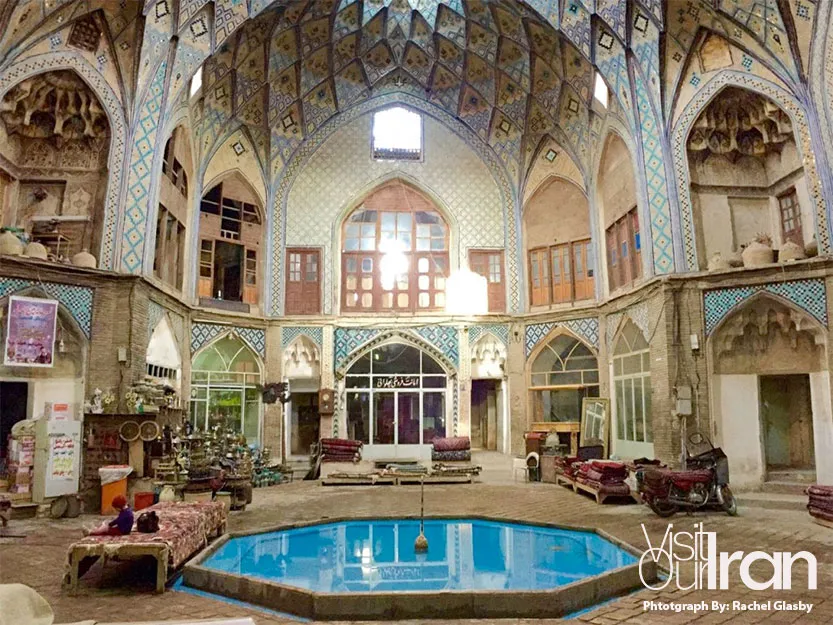
Where did you go, and which places did you have the strongest connection to?
We began our journey in the north, flying into the capital Tehran, just a two-hour flight from Dubai. From every angle in Tehran we were surrounded by the magnificent snow-capped Alborz Mountains. The city itself is a busy bustling mass of grey concrete and lacks the architectural beauty that Iran is renowned for, but it’s an incredible place to see the ‘modern’ Iran. Shop windows are full of the latest gadgetry, the metro is quick and clean and the fashion is young and fresh (albeit the latest patterned hijab head scarf). There are some spectacular day trips to the north of the city into the foothills of the Alborz Mountains, where tea houses are scattered atop bubbling snow-melt streams flowing straight off the mountains. We spent a day wandering the foothills and it felt like we were in the Himalayas.
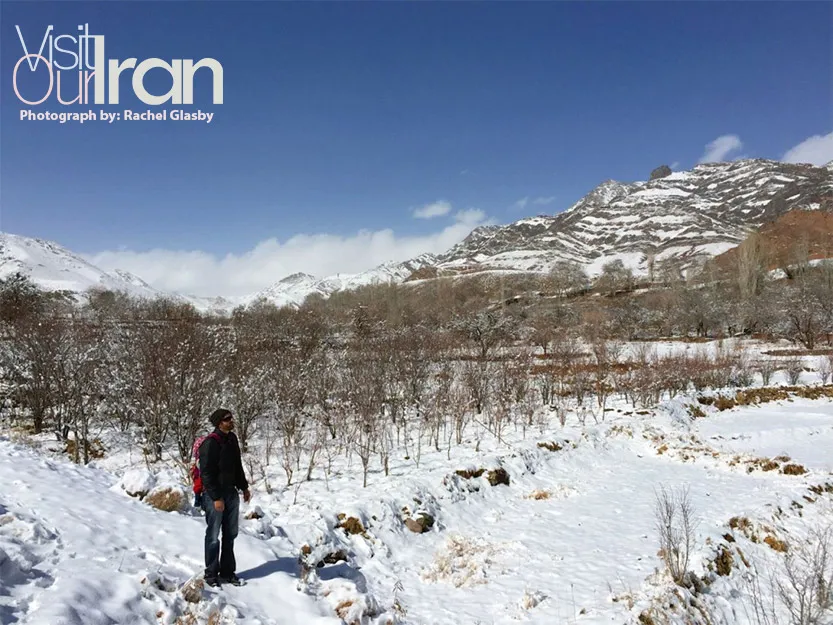
After a few days we headed south and as the city falls away, central Iran’s desert landscape quickly swallows you up. By early afternoon we arrived in Kashan, a small town that most people skip through in order to get to Iran’s big ticket sight, Isfahan. We were so happy we chose to stop here. We spent our days wandering the old streets, virtually alone at times bar the occasional group of women in their black chadors swishing past us, so beautifully contrasted against the red mud-brick walls and blue sky. Early one morning we were heartily welcomed into the back door of a bakery and fed the freshest barbari flatbread that had been cooked on the rocks of old tandoor oven. Just magic.
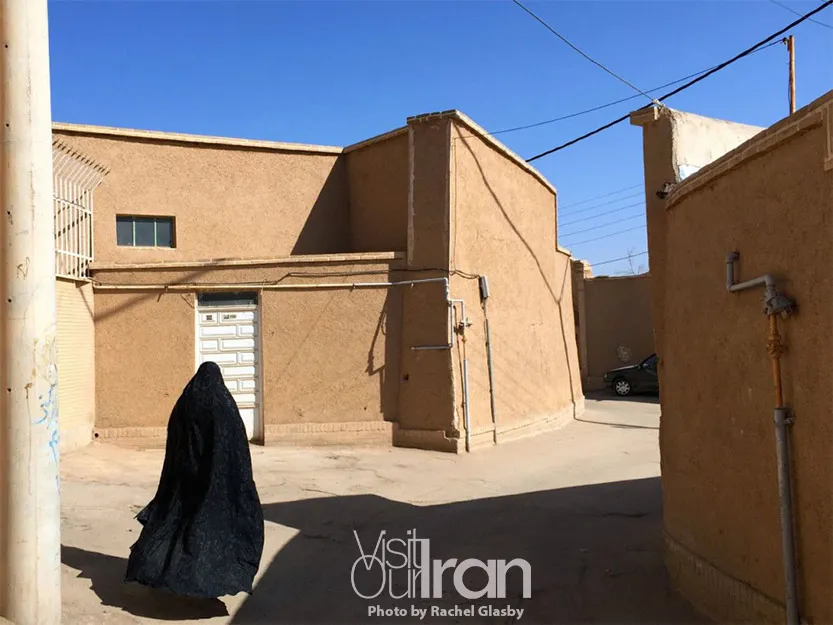
From here we took a turn to the east and ended up in the ancient Zoroastrian village of Abyaneh, nestled into the base of Mt Karkas. Remarkably we were greeted with some very late-season snow and the village, which is surrounded by apple trees, became a winter wonderland within a few hours of arriving. The religion of Zoroastrianism is said to pre-date Islam and the community here, although small, have maintained their traditional dress and lifestyle. I remember an early morning walk hilariously led to me finding myself up a rickety wooden ladder helping a Zoroastrian lady shovel snow off her roof. She was about 70 and her strength to move mountains of snow was no match for me.
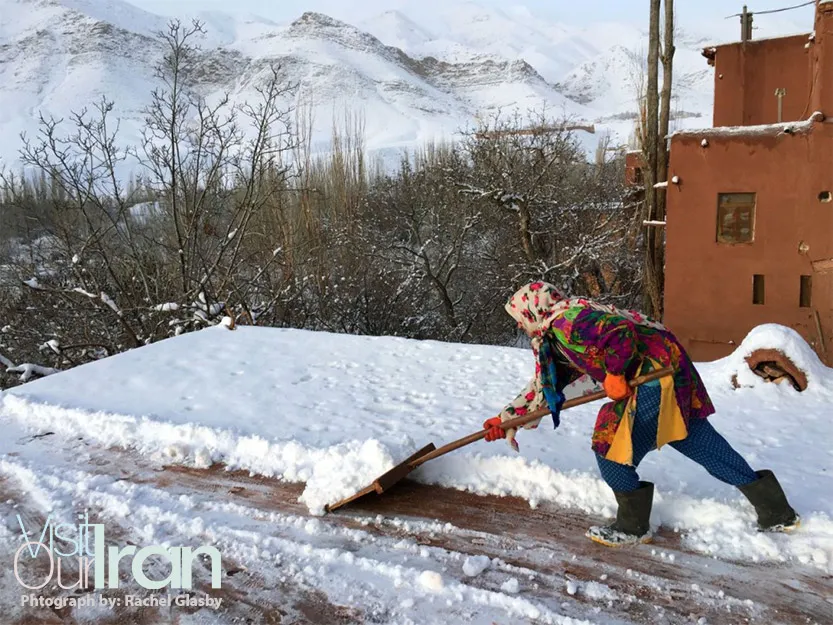
Next up was Isfahan. Imam Square takes centre stage, a huge space that is second only to Beijing’s Tiananmen Square. Carpet sellers, spice merchants, antique dealers and teahouses wrap around the perimeter and the ancient winding lanes that fall away from the square. It’s beautiful and bustling, but it maintains a surprising sense of order, especially if you are used to somewhere like the souks of Marrakech. Then there is the Sheikh Lotfollah Mosque and the Imam Mosque, two stunning examples of Persian architecture. The pictures speak for themselves: soaring arches, latticed windows and magnificent honeycomb detailing, all in the most vivid shades of blue.
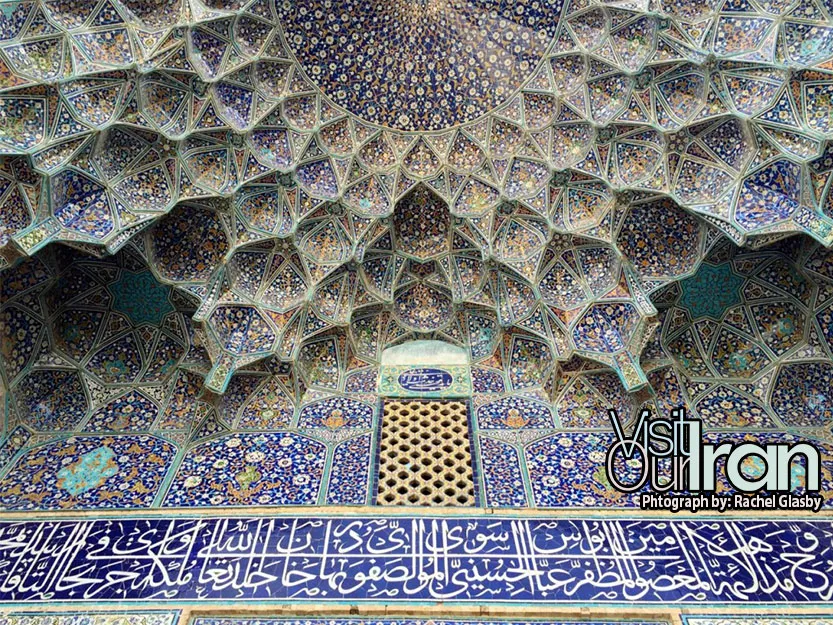
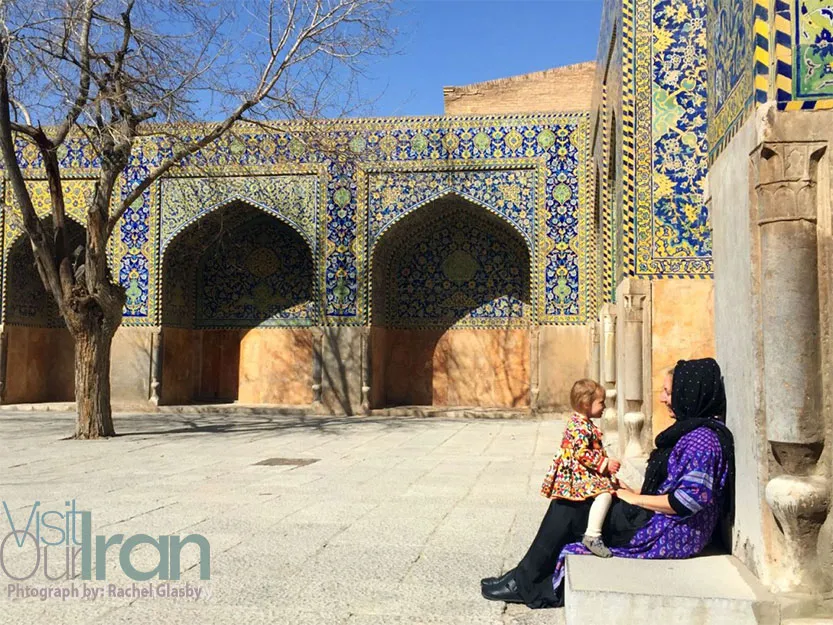
The desert city of Yazd was a highlight. Ancient caravanserais, vivid blue skies backdropped against the red mud brick city and rooftop tea houses to sit for sunset as the cities hundreds of minarets echoed with the hauntingly beautiful call to prayer. We really felt like we had immersed ourselves into the world of the ancient Silk Road. We rode camels out into the Dasht-e Kavir Desert, ate fresh dates with children in the rolling sand dunes and wandered until we were happily lost in the maze of ancient alleyways once traversed by Marco Polo.
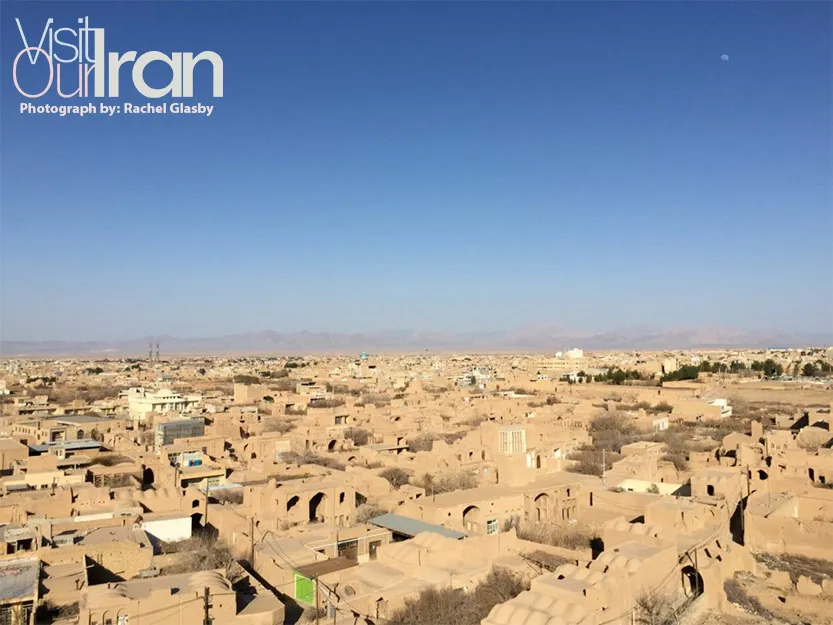
After long days on the road, winding through the desert, small villages, snow capped mountain ranges and farmland, Shiraz was our last stop. Shiraz has an incredible bazaar, perhaps the best saffron ice-cream in all of Iran and a carpet market scene that is next level (I found the best carpet shopping in the whole country to be in the Vakil Bazaar of Shiraz). One of our most beautiful memories of Shiraz was sitting alongside the stained-glass windows of the winter prayer hall of Nasir-ol-Molk Mosque. The time of year was perfect for the early morning sun to stream in and cast colourful rainbows throughout the entire hall. We spent hours here and it was a wonderful way to spend our last few days in Iran.
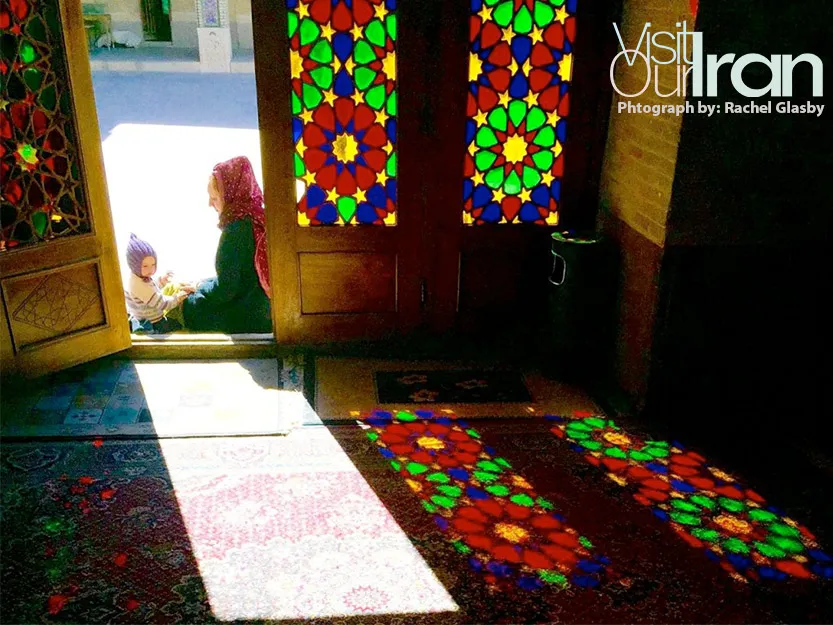
I’ve heard that the hospitality of Iranians is legendary. Did you find that?
The friendliness of Iranians will likely take you by surprise; it’s almost overwhelmingly friendly. People are so interested to sit with you in the bazaars, chat with you in tea-houses and invite you to their homes. Probably the most welcoming were young people; men and women in their mid twenties who were well-educated on world matters who simply wanted to talk about life, music, world issues and Australia. We left Iran with a strong sense of what we held in common, rather than our differences.
Did travelling there with your gorgeous baby Luna present any challenges?
Travelling with Luna is such a joy. Children open so many doors. Even if you can’t share a word to speak and your cultures are worlds apart, having children immediately bonds you. Especially when they all begin to play together on the street with no prejudices or care for the language barriers between them. Iranians absolutely love children, and seem to have a magic ability to procure a sugary treat out of their pocket at the blink of an eye.
I was also in my second trimester of pregnancy, and although I felt great it definitely slowed us down, but in a really nice way. We lingered in teashops, sat in caravanserais and ate Persian nougat with fresh pistachios while playing with other children.
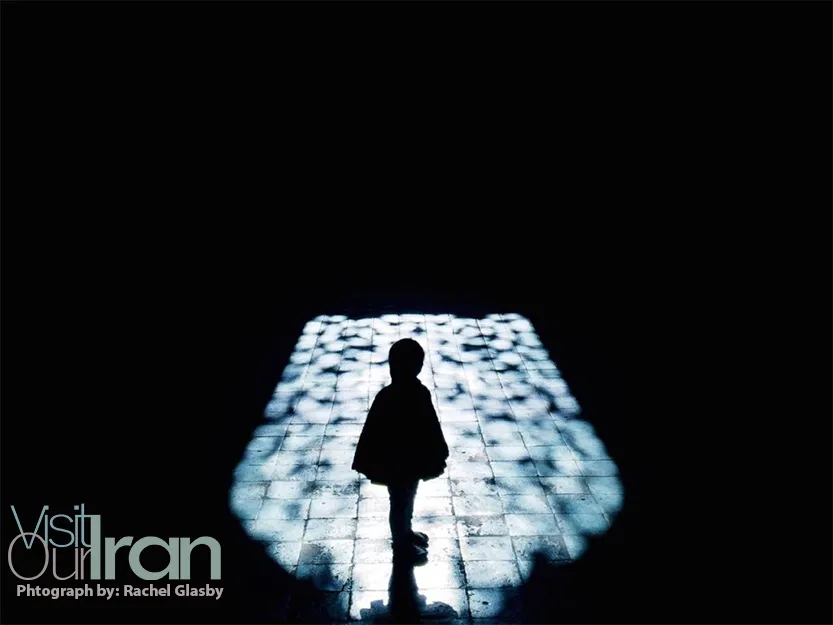
Australia is an incredible place to call home and we do not take it for granted for one second, but for us immersing ourselves and Luna into other cultures is one of our goals as parents. My husband and I both travelled to some relatively off the path places as children and it definitely shaped our characters. It’s an opportunity we would love to give to our children. We want to teach our children, and keep reminding ourselves, that although across the world we all may look and live differently, inside we’re all the same.
Is Iran a safe place to travel for women or with your children?
Absolutely. As a woman in Iran, I felt safe and respected every single moment. Men would move on the bus to allow me a seat, taxi drivers would chat away happily to me, and I was not stared at in the way you can be in India or Morocco. I also spent a lot of time observing interactions between Iranian men and women – I noticed lovely little nuances between husbands and wives or older women and their sons. It’s well documented that over 90 percent of Iranians do not support their government’s ideals, especially surrounding the enforcement of hijab for females and displays of affection in public. And, anecdotally, pretty much everyone we spoke to agreed on this figure.
Can you take us through the sights, sounds and tastes of this intoxicating land?
Marco Polo, Alexander the Great, Rumi, Hafez…Persia has a remarkable history. It’s unfortunate that nowadays Iran is judged on the last 30 years of its history and not the marvellous empire that went before. For the last few decades, the beauty of Iran has been hidden away from Westerners. The word ‘Iran’ conjures up those scary notions. But say the word ‘Persia’ and you are immediately transported to a romantic place of caravanserais, magical Scheherazade nights, beautiful carpets, spice bazaars, roses and nightingales.
If that is so, then lets call it Persia, Persia, Persia. Too beautiful to be replicated effectively by photographs, too friendly to believe, the food too delicious to stop. Saffron tea stirred with crystals of sugar on a stick, spice bazaars overflowing with the heady scent of cinnamon and Qalyān (shisha pipe), water fountains tinkling in the tea-house as you sit cross legged on a kilim covered day-bed sharing lunch with Iranians who want to talk about the world with you. I loved these beautiful things, which seem so romantic to us as travellers. And although they are true representations of day to day life in Iran, I feel it would be remiss to not also mention that Iran is a very modern country where people work hard, study hard, are highly educated in world matters and are very interested in life beyond their borders.
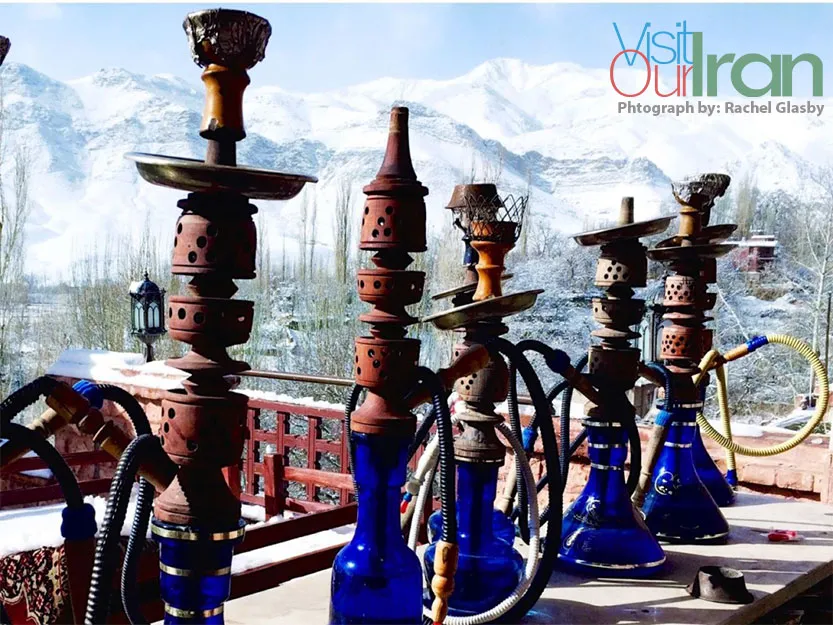
Obviously Iran has strict laws for dressing in hijab; the women must always have their hair covered in public places. How did you feel being so covered up while you were there? Did you have any preconceptions about the hijab that have now changed?
It was not my first time to an Islamic country so I wasn’t shocked. However, it was the first time I’ve had to maintain appropriate hijab for the entire time. When I travel, like most people who are happy to venture slightly off the beaten path, I feel it is vital to respect local customs whether or not I personally agree with them.
In each city, there are ‘morality police’. These are women who are in full hijab (full length black chador and head completely covered) who patrol the streets to confront Iranian women failing to properly observe modest Islamic dress code. Whilst wearing a chador is optional, the covering of ones hair, arms and legs is still required (jeans and a long tunic to the knee seems to be acceptable). As a traveller in Iran you definitely won’t have to wear the chador, and in fact if you did most people would probably laugh at you. The only exception is in a few mosques, in which case it will be provided at the door, with a smile and a giggle by the ladies, to simply slip over your own clothes.
I’ve been loving your Instagram images of the Iranian textiles. What kind of booty did you bring home with you in your treasure chest?
Our small business, The Silk Road, is based on the premise of sourcing one off, handmade pieces whilst travelling and honouring the artisan with fair prices. I have an incredible business partner Lou, who shares my love of regular travel, textiles and curiosities. So between sourcing for the shop, our own home and a few pressies for Lou, I could have had my own camel caravan. I have a passion for rugs and we got probably a few too many; I had to eat a bit of humble pie when I got home as I didn’t even have enough floor space left to put them all out, despite protesting to my husband that we would. Other treasures for the shop included kilims and cushions, saddlebags turned into handbags, tassel bags and some gorgeous tribal jewellery.
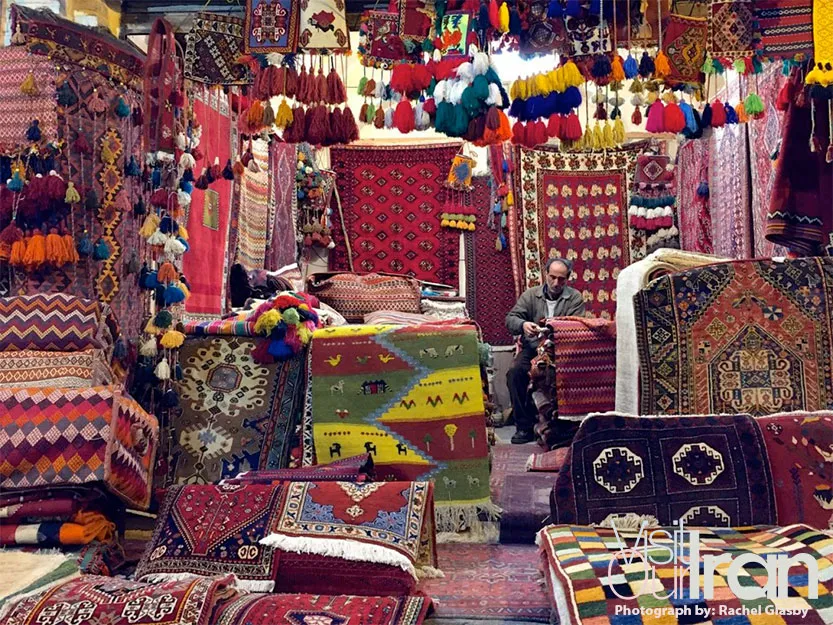
Is there a distinct memory or experience that has stayed especially strong for you?
I met an amazing group of teenage schoolgirls in a mosque in Yazd. They were absolutely enthralled to be able to practice their (very good) English. A few of them said to me “Why did you come here? We know Westerners think Iranians are terrorists. We are so happy you came to our country. Please go home and tell people that we are not terrorists!” I was so moved by this, and deeply saddened. Imagine living a life encroached by stereotyped ideas. Sharing our very small experience of the reality of everyday Iran is so important to me. I hope it can, even in the slightest way, change this perception.
Finally, any places you feel you missed that you’d love to visit next time?
Iran is a huge country. To make the most of your time there you really have to do your research and prioritise what you what to see. We would have loved to visit the ancient city of Tabriz in the north-west. Venturing a little further west would have led us to the stunning mountain vistas of Iranian Kurdistan, which borders Iraq and has a skyline reminiscent of Kashmir. I’d also definitely time my next trip to coincide with the saffron harvesting season. It’s done entirely by hand and early in the morning while the beautiful purple flower is fully open.
